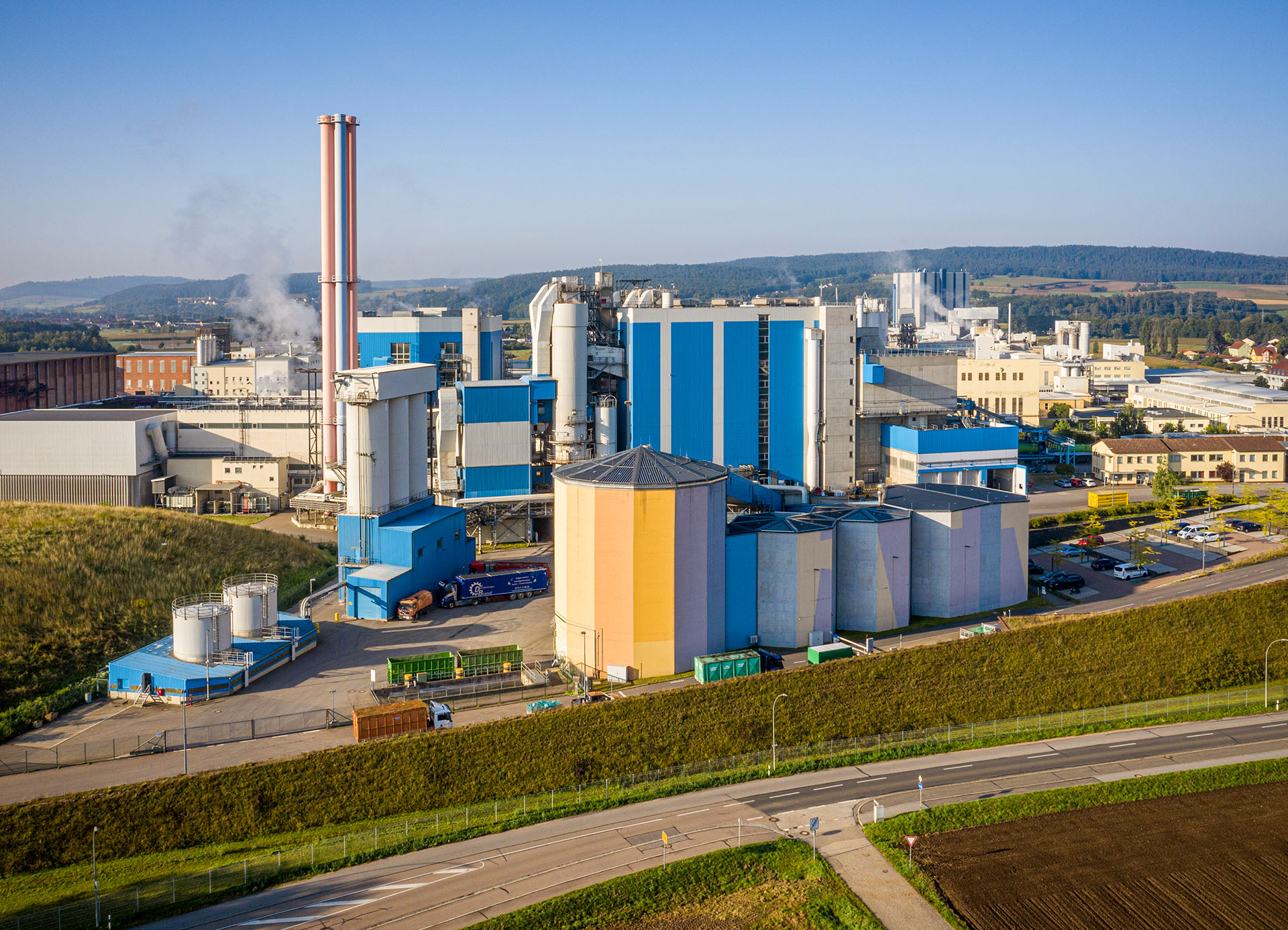
Kanadevia Inova wins contract to supply two new lines at Schwandorf waste-to-energy plant
Zurich, Switzerland Kanadevia Inova is supplying two new lines for the Schwandorf waste-to-energy plant. The contract has just been signed by Kanadevia Inova Steinmüller (HZI-STM), Gummersbach with Zweckverband Müllverwertung Schwandorf (ZMS), the local special-purpose association responsible for waste management. As part of the contract, three of the four existing lines of the waste-to-energy plant will be dismantled by ZMS and replaced by Kanadevia Inova with two larger, state-of-the-art lines. The contract for the EPC turnkey project covers the combustion system and boiler, the flue gas treatment unit, the technical building equipment, EMCR and associated technology, structural engineering and the necessary connections to the existing installations, relocation and temporary arrangements for each line.
The special purpose association relied on the expertise of the waste-to-energy specialist back in 1982 when the first three lines were built by what was then Steinmüller. After commissioning, the plant became one of the most important, system-relevant waste disposal companies in the region, disposing of waste from 17 towns and cities, districts and special-purpose waste associations belonging to ZMS, with a total of 1.91 million inhabitants, as well as producing a major amount of energy to cover basic supply. In 2010 another line was added to the plant. The waste-to-energy plant’s four incineration lines currently thermally treat around 450,000 tonnes of waste every year, converting it into electricity and heat. Supplying neighbouring industry with low-cost energy, the Schwandorf plant represents a key locational advantage for these companies. The waste-to-energy plant also feeds heat into Schwandorf’s district heating network and electricity into the public grid.
As part of the Triphönix modernisation project, the three old Steinmüller boiler systems are now being dismantled after more than 40 years of service. Kanadevia Inova will install two larger, high-performance lines on the site. In the design phase, Kanadevia Inova came up with a well-though-out installation plan in a constricted construction area allowing significantly more than the required throughput of 18 tonnes per hour; each line will thermally treat 22 t/h, which corresponds to a total throughput capacity of around 350,000 tonnes of waste per year for both. Each boiler unit will have a thermal output of 67.2 MWth. Another special feature of the modernisation concept is that parts of the old system will continue to be used, for example the SCR (selective catalytic reduction) denitrification units deployed in the flue gas treatment system and the chimney system belonging to the plant. Among other things, this means that the two new lines must be installed precisely on the old site, even though the basic layout requires the steel structure and boiler house to be rebuilt.
The Triphönix project is one of the largest investments in the history of ZMS and will further boost the plant’s importance in the region. The project will run for a total of 87 months and will be completed in 2031. To enable waste disposal to be maintained, the old lines will be dismantled and the new lines built step by step while the remaining lines continue to operate. This places special demands in terms of construction site safety, schedules and logistics during the construction of the new lines.
The two new lines offer a number of special technical features. Kanadevia Inova has developed a boiler set-up concept tailored to the space requirements, which enables highly efficient energy utilisation in the very limited space available. This has been made possible, among other things, by intelligently arranging the superheater surfaces with an appropriately adapted boiler cleaning system that works on the basis of modern shock-pulse cleaning in addition to the usual knocker cleaning. Shock-pulse cleaning involves the use of targeted explosions to free the superheater packs from caking. The system thus permanently ensures efficient heat transfer, also reducing maintenance costs.
The steam parameters, 410°C and 73 bar(a), have been tailored to the client’s needs. The flue gas treatment system is designed for maximum separation using Kanadevia Inova’s proprietary SemiDry process, fulfilling the requirements of the new 17th BlmSchV ordinance and even falling significantly below its thresholds.
Kanadevia Inova can look back on extensive experience with such complex modernisation projects. For example, it is currently working with GML – Gemeinschafts-Müllheizkraftwerk Ludwigshafen GmbH to deliver the similarly structured IGNIS project, where several lines are being dismantled and replaced with new ones over a total period of eight years while the plant continues to operate. “We are honoured that our customers have entrusted us to deliver these very extensive projects for them over such a long period of time,” says Thomas Feilenreiter, Vice President Systems & Service at Kanadevia Inova. District Administrator Thomas Ebeling, the chairman of the Schwandorf waste utilisation association, adds: “The Schwandorf waste-to-energy plant is systemically relevant for the region in terms of both waste disposal and energy supply. It was therefore important for us to find a partner that has experience in highly complex conversions and can draw on a broad range of expertise. This partner is Kanadevia Inova”
Download Press Release
Download Image (Copyright Silke Reents)